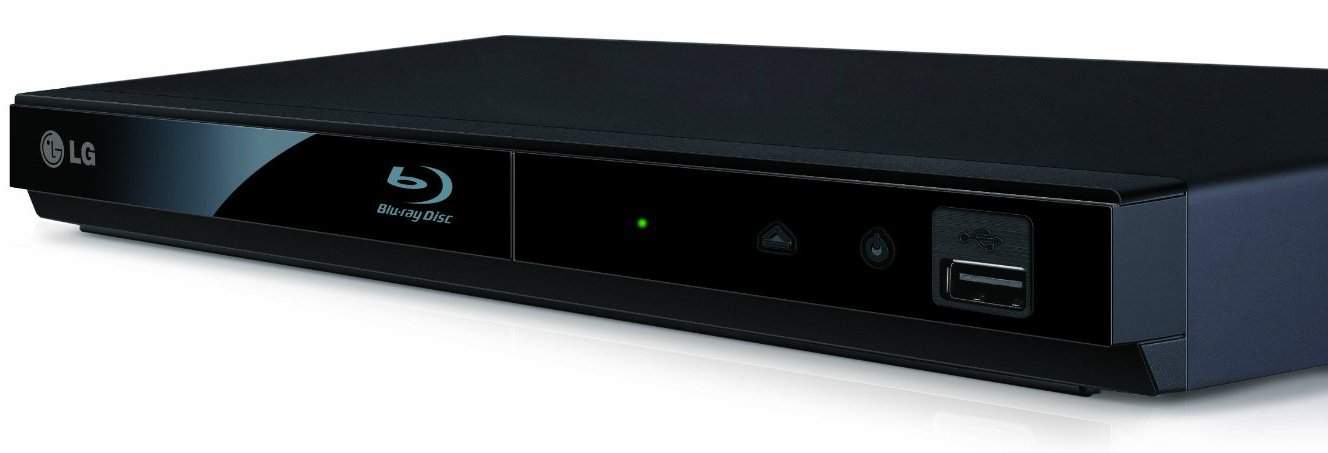LG has decided to stop producing Blu-ray disc players, marking the end of an era for physical media enthusiasts. LG has discontinued all of its Blu-ray players, including UHD Blu-ray models, signaling a shift away from physical media towards digital streaming platforms. This move follows similar decisions by other major electronics manufacturers, leaving fewer options for consumers who prefer high-quality physical media.
The discontinuation of Blu-ray players by LG reflects the changing landscape of home entertainment. As streaming services continue to dominate the market, the demand for physical media players has decreased. This trend has led to Samsung exiting the Blu-ray player market in 2019, with other companies like Sony and Panasonic also reducing their production of disc players.

LG Ends Blu-ray Player Production: The Decline of Physical Media Continues
This article explores the implications of LG’s announcement, the factors driving the decline of Blu-ray, and what it means for consumers who still value physical media.
The Significance of LG’s Decision
LG’s decision to discontinue the production of all Blu-ray disc players marks a significant moment in the ongoing shift from physical media to digital streaming. LG was one of the last major manufacturers still producing Blu-ray players, so this move signifies a further decline in the demand for physical discs and reflects the growing dominance of streaming services.
Factors Contributing to the Decline of Blu-ray
Several factors have contributed to the decline of Blu-ray and other physical media:
- Rise of Streaming Services: Streaming services like Netflix, Disney+, and Amazon Prime Video offer convenient access to vast libraries of movies and TV shows at relatively affordable prices. This convenience and accessibility have made streaming the preferred choice for many consumers.
- Improved Internet Speeds and Bandwidth: Faster internet speeds and increased bandwidth have made streaming a more reliable and high-quality experience. This has reduced the need for physical discs to achieve high-definition viewing.
- Digital Downloads and Rentals: Digital storefronts like iTunes and Google Play offer the option to purchase or rent movies and TV shows digitally. This provides another alternative to physical media.
- Shifting Consumer Habits: Consumer habits have shifted towards on-demand consumption and digital ownership. Many people prefer the convenience of accessing content instantly without the need for physical storage or handling discs.
The Impact on Consumers
LG’s decision will primarily affect consumers who still prefer physical media for various reasons:
- Collectors: Many film enthusiasts and collectors value physical media for its tangible nature, special editions, and bonus features.
- High-Quality Audio and Video: Blu-ray discs often offer higher audio and video quality than streaming services, especially for 4K Ultra HD content.
- Offline Viewing: Physical media allows for offline viewing, which is important for people with limited or unreliable internet access.
- Ownership: Owning a physical disc provides a sense of ownership that digital rentals or streaming subscriptions don’t offer.
The Future of Physical Media
While LG’s departure from the Blu-ray player market is a significant blow to physical media, it doesn’t necessarily mean the complete end of it. Niche manufacturers may continue to produce Blu-ray players for dedicated enthusiasts and collectors. However, the trend is clearly towards digital distribution, and physical media is likely to become increasingly niche in the years to come.
Summary of Key Points
| Aspect | Details |
|---|---|
| LG’s Decision | Discontinued production of all Blu-ray players |
| Contributing Factors | Rise of streaming, improved internet, digital downloads, changing consumer habits |
| Impact on Consumers | Affects collectors, those valuing high quality and offline viewing |
| Future of Physical Media | Likely to become increasingly niche |
Key Takeaways
- LG has stopped producing all Blu-ray and UHD Blu-ray players
- This decision follows a trend of major electronics manufacturers moving away from physical media players
- The shift indicates a growing preference for digital streaming over physical media in home entertainment
The Impact of LG’s Departure from the Blu-Ray Market
In a move that signals a further shift in how we consume entertainment, LG has announced it will cease production of all Blu-ray disc players. This decision marks a significant milestone in the ongoing transition from physical media to digital streaming.
LG’s exit from Blu-ray player production affects the competitive landscape and consumer options. This shift reflects broader market trends in home entertainment.
Competitive Landscape Shift
LG’s departure from the Blu-ray market leaves a shrinking pool of manufacturers. Samsung, Sony, and Panasonic now dominate the remaining market for Blu-ray players.
The UBK80 and UBK90 were LG’s last significant entries in the UHD Blu-ray player space. These models, introduced in 2018, marked the end of LG’s Blu-ray innovation.
Sony and Panasonic continue to produce high-end Blu-ray players. They focus on audiophiles and videophiles who demand top-quality physical media playback.
Consumer Options and Market Trends
Consumers face fewer choices for Blu-ray players. The declining sales of these devices reflect the shift towards streaming services.
Best Buy’s decision to quit its Blu-ray and DVD business further highlights this trend. Physical media enthusiasts may find it harder to purchase both players and discs.
Streaming services offer convenience and vast libraries. However, they lack the consistent high quality and permanence of physical media.
UHD Blu-ray players still provide the highest quality home video experience. They offer superior picture and sound compared to most streaming options.
Technological Alternatives to Physical Media Players
As physical media players decline, new technologies have emerged to fill the gap. These alternatives offer convenient ways to access and enjoy digital content without the need for traditional disc-based systems.
Rise of Streaming Apps and Platforms
Streaming services have become the primary method for consuming digital content. Popular platforms like Netflix, Hulu, and Disney+ offer vast libraries of movies and TV shows on-demand. These services provide instant access to content without the need for physical discs.
Streaming apps are now built into smart TVs, eliminating the need for separate players. Many support advanced features like 4K resolution and Dolby Vision HDR. Users can easily switch between multiple streaming services on a single device.
Some key advantages of streaming platforms include:
- No need to store physical discs
- Regular content updates
- Personalized recommendations
- Multi-device access
Game Consoles as Multi-Purpose Devices
Modern gaming consoles have evolved into versatile entertainment hubs. The Xbox Series X and PlayStation 5 offer more than just gaming capabilities. These devices can play UHD Blu-ray discs, stream content, and run various entertainment apps.
Game consoles provide a single solution for multiple media needs. They support high-quality video playback, including 4K resolution and HDR. Many users find these devices a cost-effective alternative to separate media players.
Key features of game consoles as media devices:
- Play physical discs and digital content
- Support for multiple streaming apps
- Regular software updates
- High-quality audio and video output







